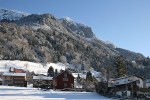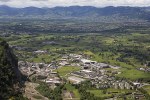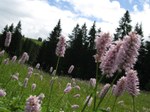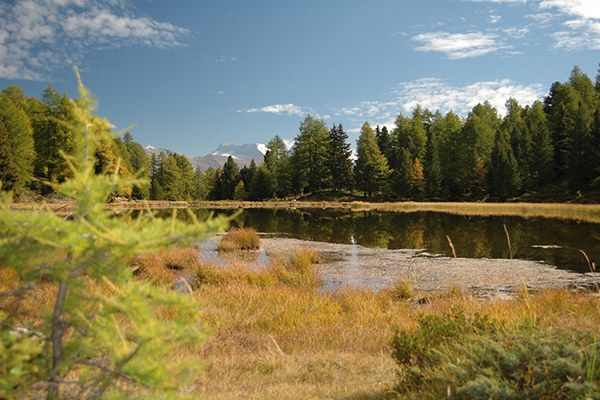News
Bogs – a way out of the climate swamp
The draining of bogs to extract peat or for farming, housing and roadbuilding purposes goes back centuries. The recognition that the destruction of these fragile ecosystems has serious consequences for biodiversity and climate came just a few decades ago. The Ramsar Convention was adopted in 1975 as the first international instrument for the protection of wetlands; it has been ratified by all the Alpine countries. Yet we cannot today speak of the functioning protection of wetlands. Figures from Germany, Austria and Switzerland show that 90 percent of the original bog areas in the Alps have already been destroyed. Many of the remaining wetlands are in a precarious state.
According to Elisabeth Sötz of WWF Austria, these fragile ecosystems are today once more under increasing pressure. Bogs in the Alps were largely spared where pressure for their use was low, for example in remote valleys. «But now, with decreasing snowfall at lower altitudes, such sites are increasingly falling victim to the extension of ski areas or to the construction of new basins and reservoirs.» The soil protection protocol contained in the Alpine Convention attempts to bring the various usage demands in line with other economic and environmental needs. She believes that this may help correct decisions to be made in such cases.
Research and civil society in the lead
Where legal frameworks and policy measures fall short, there is an especial need to support innovative ideas in civil society and in research. One example are the «bog certificates»: their purchase allows businesses or individuals to improve their own greenhouse gas performance for the benefit of endangered bog sites. Bog certificates, already offered in some European countries for years, are now available in the Alps. Science too is increasingly addressing the issues concerning bogs: the expression «paludiculture» is currently an umbrella term where opportunities are investigated for the agricultural use of original or re-established wetlands.
The concept of ecosystem services in turn helps to raise awareness of the environmental, economic, social and cultural value of wetlands. An intact bog acts not just as a carbon sink but also stores water. No other type of Alpine soil can hold as much water as marshland. Whether in the ever more frequent dry periods, or during heavy rains, bogs regulate the water balance and also play a vital role in purifying groundwater and drinking water. They are also hotspots of biodiversity and can be used by people as leisure and recreational areas.
Links and further information:
www.bundesforste.at/uploads/publikationen/Studie_Moore_im_Klimawandel_2010_01.pdf (de), Stöcklin et al. 2007: Landnutzung und biologische Viefalt in den Alpen (de), www.bafu.admin.ch/bafu/de/home/themen/biodiversitaet/publikationen-studien/publikationen/zustand-entwicklung-moore.html (de, fr), www.umweltnetz-schweiz.ch/themen/naturschutz/2704-zustand-der-moore.html (de), www.bmub.bund.de/fileadmin/Daten_BMU/Pools/Forschungsdatenbank/fkz_3715_71_201_bodenschutz_alpenkonvention_bf.pdf (de), www.moorfutures.de (de), www.moor-land.de (de), www.wsl.ch/de/projekte/klimaschutz-durch-hochmoorschutz.html (de), https://naturwissenschaften.ch/organisations/biodiversity/publications/informations_biodiversity_switzerland/search_details?id=1433&_ga=2.111847235.616790399.1517212817-342207699.1517212817 (de, fr), www1.wdr.de/mediathek/video/sendungen/planet-wissen-swr/video-das-moor--kulturlandschaft-und-klimafaktor-100.html (de), www.bfn.de/themen/biotop-und-landschaftsschutz/moorschutz/oekosystemleistungen.html (de)





